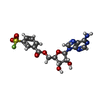Entry Database : PDB / ID : 5o49Title Human FGF in complex with a covalent inhibitor Fibroblast growth factor receptor 1 Keywords / / / Function / homology Function Domain/homology Component
/ / / / / / / / / / / / / / / / / / / / / / / / / / / / / / / / / / / / / / / / / / / / / / / / / / / / / / / / / / / / / / / / / / / / / / / / / / / / / / / / / / / / / / / / / / / / / / / / / / / / / / / / / / / / / / / / / / / / / / / / / / / / / / / / / / / / / / / / / / / / / / / / / / / / / / Biological species Homo sapiens (human)Method / / Resolution : 1.91 Å Authors Debreczeni, J. / Breed, J. / Mukherjee, H. / Aquila, B. / Kaiser, C. / Tentarelli, S. / Whitty, A. / Grimster, N. Journal : Org. Biomol. Chem. / Year : 2017Title : A study of the reactivity of S(VI)-F containing warheads with nucleophilic amino-acid side chains under physiological conditions.Authors : Mukherjee, H. / Debreczeni, J. / Breed, J. / Tentarelli, S. / Aquila, B. / Dowling, J.E. / Whitty, A. / Grimster, N.P. History Deposition May 26, 2017 Deposition site / Processing site Revision 1.0 Feb 7, 2018 Provider / Type Revision 1.1 Nov 13, 2024 Group / Database references / Structure summaryCategory chem_comp_atom / chem_comp_bond ... chem_comp_atom / chem_comp_bond / database_2 / pdbx_entry_details / pdbx_modification_feature Item / _database_2.pdbx_database_accession
Show all Show less
 Open data
Open data Basic information
Basic information Components
Components Keywords
Keywords Function and homology information
Function and homology information Homo sapiens (human)
Homo sapiens (human) X-RAY DIFFRACTION /
X-RAY DIFFRACTION /  SYNCHROTRON / Resolution: 1.91 Å
SYNCHROTRON / Resolution: 1.91 Å  Authors
Authors Citation
Citation Journal: Org. Biomol. Chem. / Year: 2017
Journal: Org. Biomol. Chem. / Year: 2017 Structure visualization
Structure visualization Molmil
Molmil Jmol/JSmol
Jmol/JSmol Downloads & links
Downloads & links Download
Download 5o49.cif.gz
5o49.cif.gz PDBx/mmCIF format
PDBx/mmCIF format pdb5o49.ent.gz
pdb5o49.ent.gz PDB format
PDB format 5o49.json.gz
5o49.json.gz PDBx/mmJSON format
PDBx/mmJSON format Other downloads
Other downloads 5o49_validation.pdf.gz
5o49_validation.pdf.gz wwPDB validaton report
wwPDB validaton report 5o49_full_validation.pdf.gz
5o49_full_validation.pdf.gz 5o49_validation.xml.gz
5o49_validation.xml.gz 5o49_validation.cif.gz
5o49_validation.cif.gz https://data.pdbj.org/pub/pdb/validation_reports/o4/5o49
https://data.pdbj.org/pub/pdb/validation_reports/o4/5o49 ftp://data.pdbj.org/pub/pdb/validation_reports/o4/5o49
ftp://data.pdbj.org/pub/pdb/validation_reports/o4/5o49 Links
Links Assembly
Assembly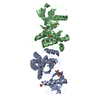
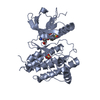

 Components
Components Homo sapiens (human) / Gene: FGFR1, BFGFR, CEK, FGFBR, FLG, FLT2, HBGFR / Production host:
Homo sapiens (human) / Gene: FGFR1, BFGFR, CEK, FGFBR, FLG, FLT2, HBGFR / Production host: 
 X-RAY DIFFRACTION / Number of used crystals: 1
X-RAY DIFFRACTION / Number of used crystals: 1  Sample preparation
Sample preparation SYNCHROTRON / Site:
SYNCHROTRON / Site:  Diamond
Diamond  / Beamline: I03 / Wavelength: 0.97625 Å
/ Beamline: I03 / Wavelength: 0.97625 Å Processing
Processing Movie
Movie Controller
Controller




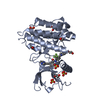
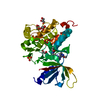
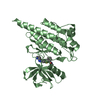
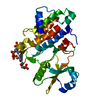
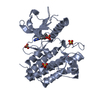

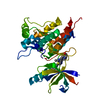

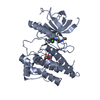
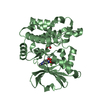
 PDBj
PDBj









